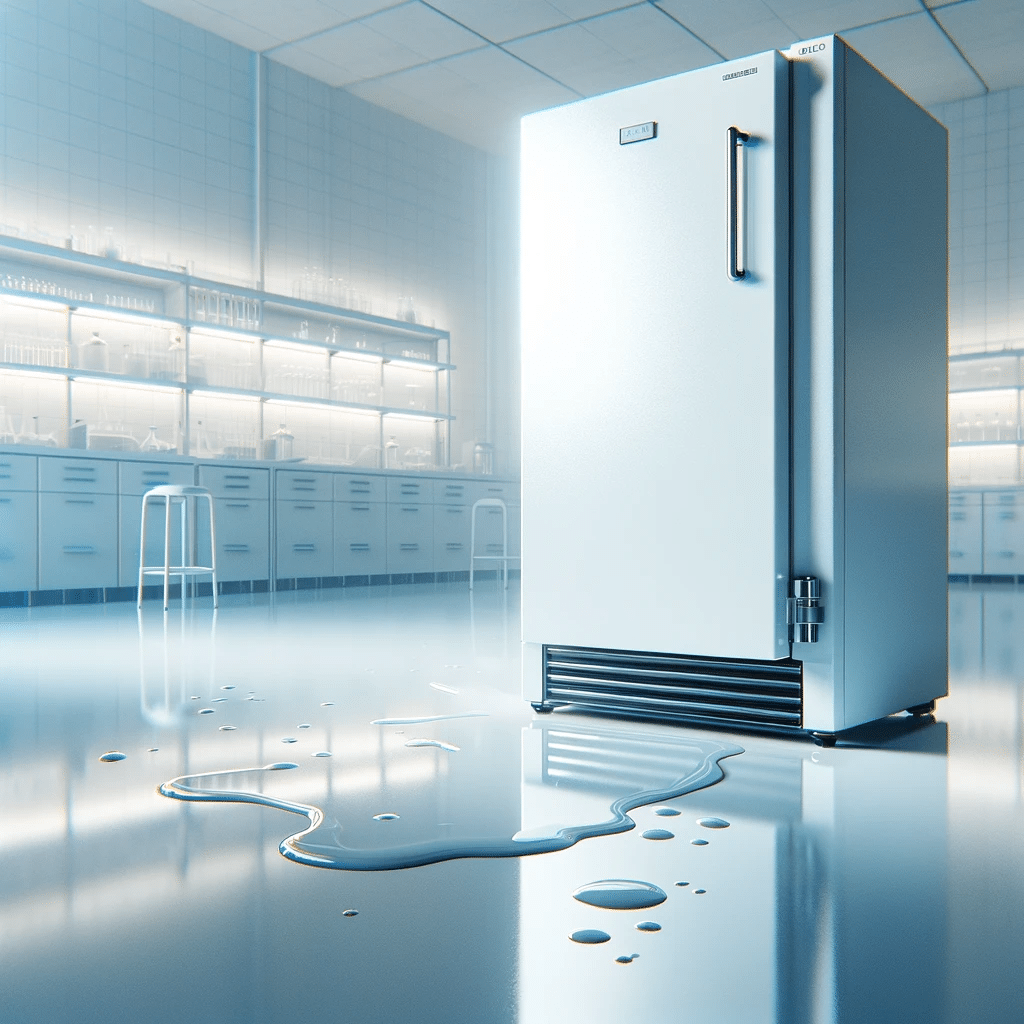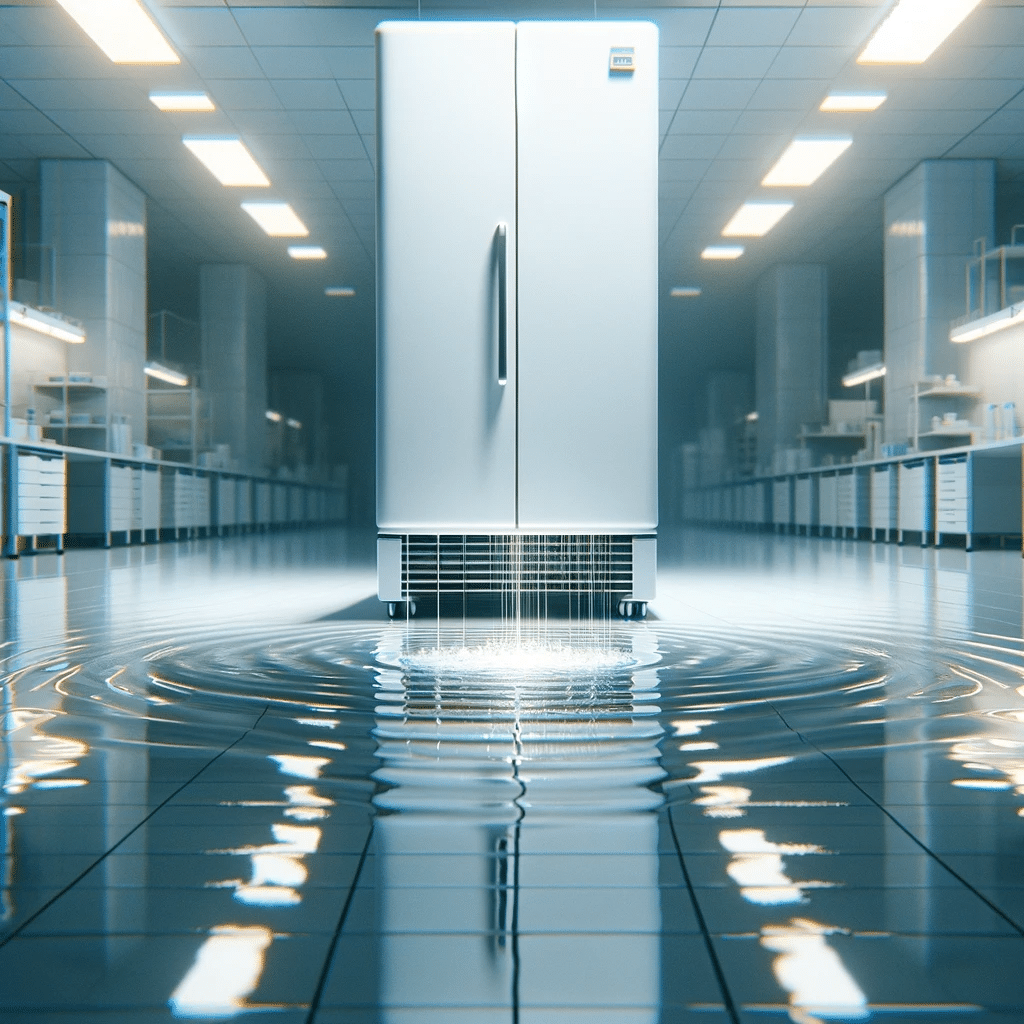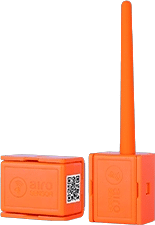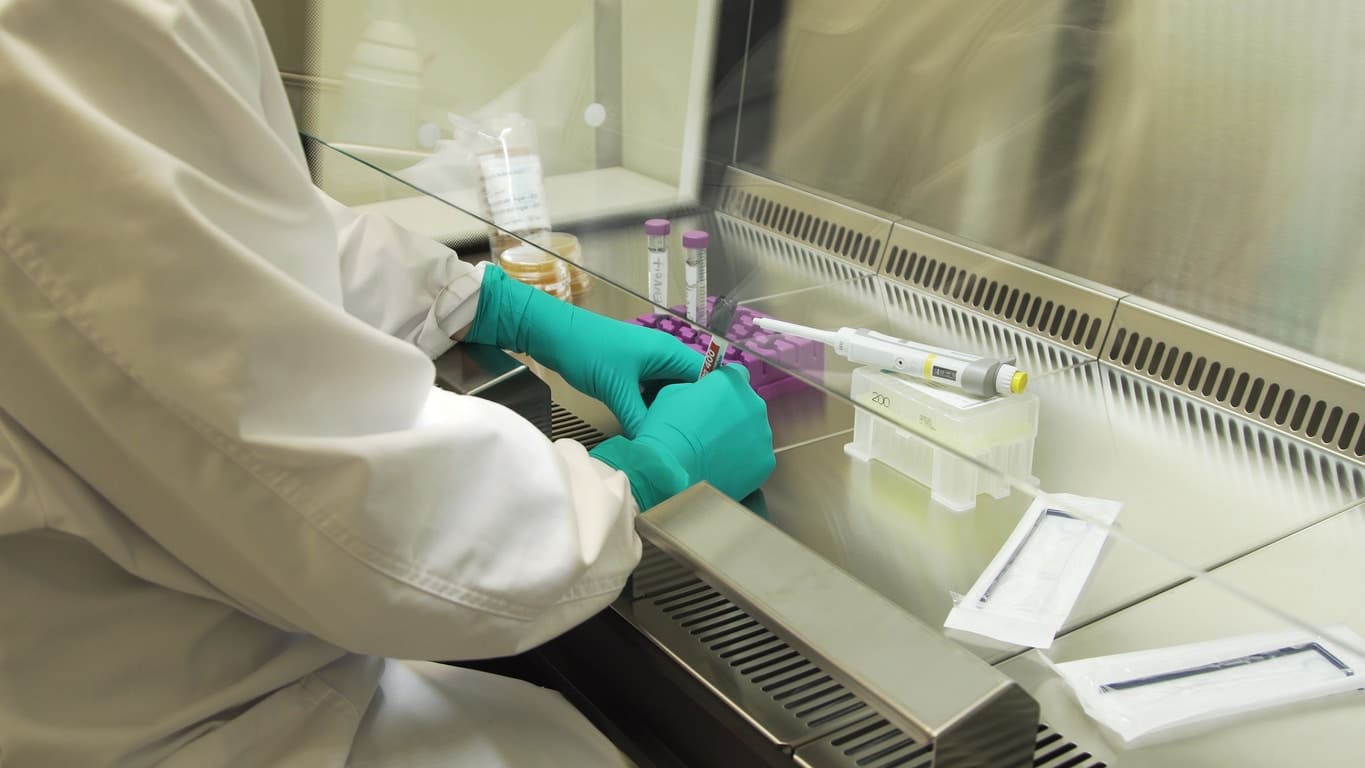
In the fast-paced world of clinical and research laboratories, the importance of monitoring the temperatures of refrigerators, freezers, and even the ambient laboratory environment cannot be overstated. This practice is foundational to ensuring the integrity of critical samples and research data. Recent high-profile incidents, in which significant research losses were reported due to refrigeration failures, highlight the dire consequences of neglecting this aspect of laboratory management. Fortunately, the development of real-time monitoring solutions offers a robust safeguard against such mishaps, marking a leap from the erstwhile manual daily quality-control checks.
The reluctance of many laboratories to embrace remote monitoring technologies can be attributed to a variety of factors. Initially, the high costs associated with these systems was a significant barrier to their widespread adoption. Additionally, the complexities involved in integrating these technologies with existing company computer systems further discouraged many from transitioning. However, the landscape of laboratory management has evolved, and advances in technology not only have made these systems more affordable, but also have simplified their integration with existing infrastructure, making 24/7 sample protection a tangible reality for laboratories of all sizes.
Despite these advancements, several sticking points continue to hinder the universal adoption of remote monitoring systems in laboratories. One of the primary concerns is the perception of complexity and the anticipated disruption to existing workflows. Laboratories, being ecosystems of precision and routine, often exhibit a resistance to change, especially when it involves the introduction of new technologies. This inertia can be detrimental because it prevents the adoption of systems that could potentially avert significant losses.
Furthermore, the lack of awareness and understanding of the benefits of real-time monitoring systems contributes to their underutilization. Many laboratories still operate under the misconception that manual checks suffice for their needs, overlooking the inherent risks and limitations of such practices. This oversight can lead to catastrophic consequences because manual checks offer no protection against human error and unforeseen failures outside of routine inspection times.
Another challenge is the initial setup and maintenance of these monitoring systems. Concerns about the technical expertise required for installation and ongoing maintenance can deter laboratories from adopting these solutions. However, with many providers offering comprehensive support services, this should no longer be a significant impediment.
The transition to real-time monitoring systems in laboratories is not merely an upgrade in technology: It is a fundamental shift toward a more secure and reliable research environment. The potential sticking points, ranging from cost and complexity concerns to resistance to change, can be addressed through education, awareness, and support from technology providers. As the stakes in research and clinical work continue to rise, the adoption of remote monitoring systems moves from a best practice to an essential component of laboratory management. Embracing this change not only safeguards valuable research, but also propels laboratories toward a future of scientific endeavors that are no longer at the mercy of preventable failures.

A Cautionary Tale: Human Error Leads to Loss of Decades of Research, Spotlighting the Need for Automated Monitoring
A recent national news story underscored the crucial need for sophisticated monitoring in scientific research after a significant incident at a laboratory resulted in the loss of decades of potentially groundbreaking research due to a simple human error. At the heart of this unfortunate event was a lab freezer, vital for preserving key samples at minus 80 degrees Celsius (minus 112 degrees F), which was inadvertently shut down by a member of the custodial staff. The custodial staff was reportedly attempting to silence an “annoying” alarm sound emanating from the freezer, not anticipating the catastrophic impact this action would have.
The freezer was crucial for storing delicate samples related to photosynthesis research, with implications for advancing solar panel technology. Just days before the incident, the freezer’s alarm had signaled a concerning 3 degrees C increase in temperature. Although this fluctuation was initially deemed non-threatening to the samples by the research team, it underscored the precarious balance maintained in such high-stakes research environments.
This incident spotlights the indispensable value of remote temperature monitoring systems in laboratories. Such systems offer real-time alerts and automated responses to temperature deviations, potentially averting disasters before they occur. Unlike traditional manual checks, which are susceptible to human error and limited by infrequent monitoring intervals, remote monitoring can provide continuous oversight of critical parameters. This ensures that any irregularities are promptly identified and addressed, even outside of regular laboratory operating hours.
The absence of remote monitoring in this scenario left the laboratory’s valuable research vulnerable to human error — a risk that has become increasingly untenable with the technological solutions available. Implementing remote temperature monitoring systems in laboratories is more than just an operational improvement; it’s a fundamental safeguard for preserving the integrity of scientific research. This incident serves as a stark reminder of the tangible losses that can result from overlooking such essential technological safeguards.

Temperature Monitoring in Clinical and Research Laboratories
In both clinical and research laboratory settings, temperature plays a crucial role in ensuring the stability of samples. Adhering to Good Laboratory Practices (GLP) and specific Standard Operating Procedures (SOPs), it’s imperative to closely monitor environmental conditions within specialized testing areas. This encompasses a wide array of laboratory components including instruments, incubators, refrigeration units, and rooms designated for specimen storage. Unlike a conventional work schedule, temperature monitoring is a round-the-clock commitment, extending through weekends and holidays.
Temperature: The Cornerstone Parameter
Among various physical parameters that clinical laboratories monitor, such as humidity, air pressure, and airflow, temperature stands out as the most critical. It forms the foundation of numerous analytical processes, necessitating exact temperature readings, even in the absence of laboratory personnel. For clinical labs, regulatory guidelines such as CDC Subpart K sections 493.1252, .1253, and .5126 highlight the importance of maintaining precise temperatures for laboratories, their instruments, and materials used.
Biological test systems, which form the bulk of in vitro testing, exhibit high sensitivity to their environmental conditions, particularly temperature. The physical characteristics of materials, including the stability of reagents labeled for “room temperature” storage, can be adversely affected by temperature variations. A notable example is the decrease in viscosity of aqueous solutions with temperature increases, which can impact the consistency of patient samples and reference materials. Analytical techniques, like fluorometry, and assays for enzymes such as ALT and AST, are also temperature-dependent, underscoring the necessity for constant temperature control.
Understanding Macro and Mini Environments
The broader laboratory environment, or macro environment, is often referred to in terms of “room temperature,” typically maintained at 20 or 25 degrees C. However, the definition of room temperature is not universally standardized and can vary based on the performance of the HVAC system in place. Temperature inconsistencies, such as hot and cold spots, can arise from the layout and airflow dynamics within the laboratory, affecting both assumed and actual temperature readings. Temperature mapping can help identify these areas of instability.
Conversely, the micro environment focuses on smaller, controlled spaces like incubators and refrigeration units. Here, the approach to temperature monitoring, including sensor selection and placement, differs from that of the macro environment. Establishing temperature range limits for various materials in these settings poses unique challenges.
Dispelling Temperature Measurement Myths
Temperature measurement is not inherently difficult, but it can present challenges depending on the desired accuracy and the material’s thermal properties. Thermal gradients, often overlooked, can significantly influence measurement accuracy, particularly in materials with poor thermal conductivity. Additionally, using a calibrated sensor does not guarantee accurate readings due to potential errors and sensor drift over time. It’s crucial to ensure that temperature measurement instruments are calibrated against a higher accuracy standard and that the calibration includes the entire sensor-readout system.

Sensor Diversity in Laboratories
Clinical laboratories commonly employ thermocouples, thermistors, and resistance temperature detectors , each with distinct characteristics. Thermocouples, suitable for high-temperature applications, offer rapid response times but may lack long-term stability. Thermistors, known for their small size and reasonable response times, are ideal for temperatures below 200 degrees C. Resistance temperature detectors, renowned for their accuracy and stability, are the preferred choice for precise temperature measurements.
Challenges in Laboratory Temperature Management
In the realm of metrology, understanding the nuances between calibration and adjustment is important. Calibration entails certifying an instrument’s accuracy against established standards without modifying the instrument itself, whereas adjustment involves aligning the instrument’s performance with the manufacturer’s specifications to ensure precision. This distinction is vital for maintaining the accuracy of measurements. In the sphere of temperature monitoring, particularly in medical laboratories, there has been an evolution from manual, time-intensive methods prone to inaccuracies to more sophisticated, automated systems that offer continuous monitoring, alarms, and remote capabilities. Despite this technological advancement, many labs still incorporate manual readings alongside modern systems, reflecting an ongoing transition toward more reliable temperature control practices.
Effective temperature management is pivotal in laboratories to preserve the integrity of sensitive materials like reagents and biological specimens, necessitating strict adherence to specified temperature ranges. The challenges in maintaining these conditions include power fluctuations, human error, and the physical management of storage units. Laboratories also must comply with rigorous standards set by accrediting bodies, which cover aspects such as monitoring frequency and equipment calibration. The collective responsibility for temperature monitoring among lab staff, coupled with the strategic investment in advanced monitoring solutions, underscores the importance of accurate temperature control in enhancing patient care through improved laboratory efficiency and reliability. As the industry moves forward, the trend toward wireless and continuous monitoring systems is expected to further elevate the standard of care, emphasizing the critical role of precise temperature management in healthcare.
Advancing Laboratory Standards with SenseAnywhere: Essential Monitoring for Research and Clinical Environments
In the critical arenas of research and clinical laboratories, where the precision and safety of temperature-sensitive materials are paramount, SenseAnywhere stands at the forefront of environmental monitoring innovation. This comprehensive guide explores the multiple benefits and features of SenseAnywhere’s monitoring solutions, proving their essential role in ensuring accuracy, reliability, and compliance within any laboratory setting.
SenseAnywhere Monitoring Solutions: Tailored for Laboratories
Designed for simplicity in installation, operation, and maintenance, SenseAnywhere’s monitoring systems, including the state-of-the-art AiroSensor, are built for the long haul, promising a maintenance-free operational life of up to 10 years. These devices begin tracking and logging data automatically upon setup, equipped with motion and shock detection via an integrated accelerometer, and an optional humidity monitoring feature for a full environmental assessment.
Key Advantages for Laboratories:
Extensive Wireless Connectivity: AiroSensor transmits data over 600 meters directly to an AccessPoint, ensuring no data loss, even in large laboratory settings.
Comprehensive Data Logging: Capable of storing up to 18,500 events and 1 million measurements, AiroSensor provides detailed records for rigorous analysis.
Immediate Alert System: SenseAnywhere’s real-time notifications for temperature anomalies or storage deviations ensure the integrity and efficacy of sensitive materials.
Durable and Compact: With NIST or equivalent certifications, these data loggers guarantee accuracy and reliability.
Hassle-Free Installation: The system requires no intricate setup, making it ideal for fast-paced laboratory environments.
Precision Monitoring: Temperature readings are highly accurate, with minimal drift, supporting the stringent requirements of laboratory research.
User-Friendly Interface: The cloud-based platform allows for easy data access and customizable reporting, with no software installation needed.

ARES: The One-Stop Shop for Refrigeration and Real-Time Monitoring
ARES Scientific stands out as the quintessential ally for laboratories seeking comprehensive solutions for refrigeration and real-time temperature monitoring. Its partnership with SenseAnywhere exemplifies its commitment to offering top-tier, technologically advanced monitoring systems that cater to the nuanced needs of any laboratory environment. Whether the requirement is for monitoring a singular freezer or overseeing the environmental conditions of an entire department, ARES Scientific delivers with unmatched proficiency.
The SenseAnywhere platform, with its robust features and user-friendly interface, is an excellent choice for laboratories prioritizing precision, reliability, and ease of use in their monitoring systems. Its seamless integration into laboratory operations, coupled with the assurance of real-time alerts and data logging, ensures that laboratories can maintain the integrity of their sensitive materials without compromise. The platform’s adaptability, from individual units to extensive networks, makes it a versatile tool for a wide range of applications within the scientific community.
ARES Scientific’s commitment to providing comprehensive solutions extends beyond just the products it offers. Its service encompasses a thorough understanding of laboratory needs, ensuring that each solution is tailored to fit the specific requirements of their clients. This bespoke approach, combined with its extensive product range, positions ARES Scientific as the ultimate one-stop shop for all laboratory refrigeration and real-time temperature monitoring needs.
Choosing ARES Scientific and the SenseAnywhere platform means investing in the safety, compliance, and efficiency of laboratory operations. It’s a decision that enhances the immediate operational environment and also contributes to the broader objectives of scientific research and clinical work by safeguarding the integrity and viability of critical research materials. In the dynamic and demanding world of laboratory science, partnering with ARES Scientific offers the peace of mind that comes from knowing your laboratory’s refrigeration and monitoring needs are comprehensively covered.
Check out our piece on the essentials of real-time temperature monitoring in the pharmaceutical industry. For more information, contact ARES here.





